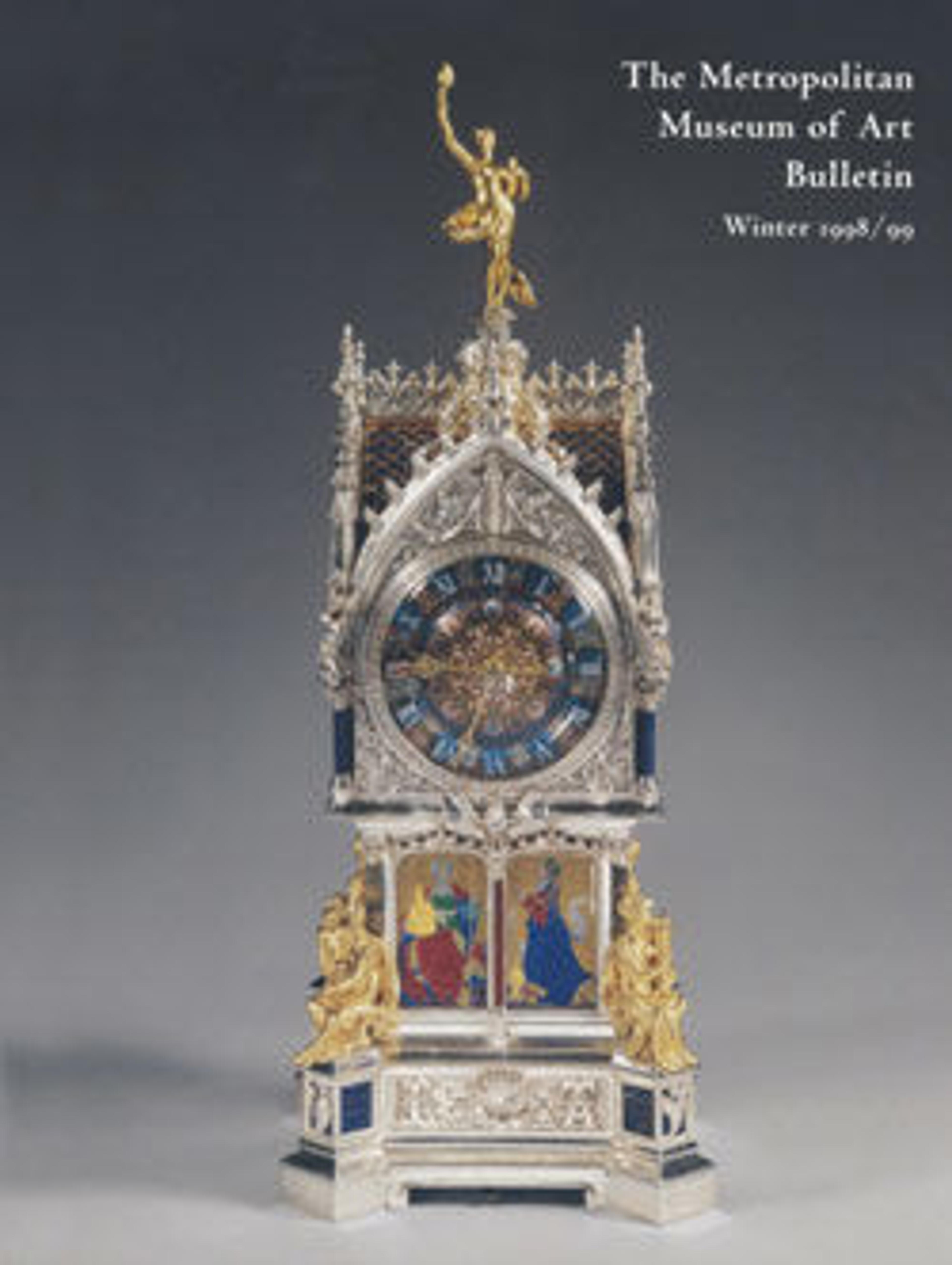Clock with Father Time
Carrier-Belleuse was probably the most versatile sculptor of his time. Not only was he, himself, capable of executing commissions for public monuments and creating full-scale Salon pieces, but also his studio was the prolific source of small, decorative sculpture for collectors and limited editions of high-quality decorative objects. In addition, he supplied designs for many other leading producers of the decorative arts, among them porcelains for Sèvres and Minton and luxury objects in metal for the founder Ferdinand Barbedienne and the jeweler Lucien Falize. Carrier's design for this clock which is also in the Museum's collection (see 1991.266), was used by the Paris firm of Guéret frères, specialists in furniture with carved wooden ornament.
Artwork Details
- Title: Clock with Father Time
- Designer: Albert-Ernest Carrier-Belleuse (French, Anizy-le-Château 1824–1887 Sèvres)
- Maker: Cabinetmaker: Guéret Frêres (1853–ca. 1900)
- Maker: Clockmakers: Cartier (French, founded Paris, 1847) and
- Maker: Clockmaker: Vincenti et Cie (1831–1890) , working separately ca. 1860–90
- Date: 1863
- Culture: French, Paris
- Medium: Walnut, glass, bronze, and steel
- Dimensions: Overall: 20 3/4 × 16 1/4 × 8 in. (52.7 × 41.3 × 20.3 cm)
- Classification: Horology
- Credit Line: Purchase, David T. Schiff Gift, 1991
- Object Number: 1991.261
- Curatorial Department: European Sculpture and Decorative Arts
More Artwork
Research Resources
The Met provides unparalleled resources for research and welcomes an international community of students and scholars. The Met's Open Access API is where creators and researchers can connect to the The Met collection. Open Access data and public domain images are available for unrestricted commercial and noncommercial use without permission or fee.
To request images under copyright and other restrictions, please use this Image Request form.
Feedback
We continue to research and examine historical and cultural context for objects in The Met collection. If you have comments or questions about this object record, please complete and submit this form. The Museum looks forward to receiving your comments.
